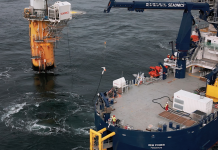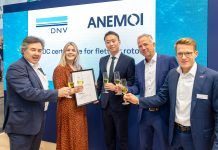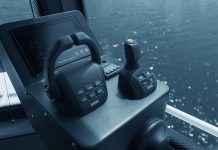Kenzen has improved its smart PPE system to keep workers safer in hot environments. The additions can now track heat susceptibility and sweat rate, both of which are important to managing stress, injury, and fatality risk.
The system calculates a worker’s susceptibility to heat, classifying that into low, moderate, or high risk categories. The calculations are determined by workers’ physical fitness, medical conditions, history of heat injury or illness, chronic illnesses, medications, and age.
The system does not track personal information, and is only used to help supervisors manage and monitor heat risk.
“Managers have so much to worry about at their worksite, including if their workers are physically able to work safely to get the job done well and on time,” said Nicole Moyen, Kenzen’s vice president of research and development. “This new feature tells managers which workers to monitor closely on hot days, and when and how to alter an individual’s schedule or workload.”
Kenzen’s sweat rate monitoring feature uses a worker’s information and physiological data to calculate and predict their sweat rate in liters per hour. A manager can view an individual’s sweat rate on the Kenzen analytics dashboard, which also indicates how much water that person needs to drink each hour to stay hydrated. The data eliminates the guesswork in how to keep workers safely. Using the system, managers can bring enough water to the worksite to hydrate their teams sufficiently, based on each individual’s sweat rate and the predicted environmental conditions that day. Kenzen’s proprietary sweat rate feature gives a hydration plan that is accurate within one quarter of a liter (1 cup of water).
“There is no ‘one size fits all’ when it comes to hydration, which is why it’s important to use each person’s sweat rate for an individualized hydration plan,” Moyen said. “Dehydration is a major problem on worksites and increases the chances of someone getting a heat injury or illness, having an accident at the worksite, or suffering from cognitive impairment. Staying hydrated is a simple fix to avoid most of these problems.”
Kenzen devices worn by workers contain sensors that monitor, in real time, an individual’s physiological responses. The system warns workers when their core temperature is too high and they are in danger of a heat-related injury. Managers have a corresponding app that alerts them when a worker needs an intervention to stop work, rest, and hydrate, and a second alert for when it’s safe to return to work. The system can also aggregate data over weeks and months.
Kenzen’s heat monitors are used by workforces across the globe in domains such as construction, mining, field services, manufacturing, renewable energy, utility oil and gas, agriculture, and transportation.
This summer, Kenzen has a rental program for companies to quickly deploy the technology with packages of 10, 20, and 50 devices.
MORE INFO Kenzen.com



























